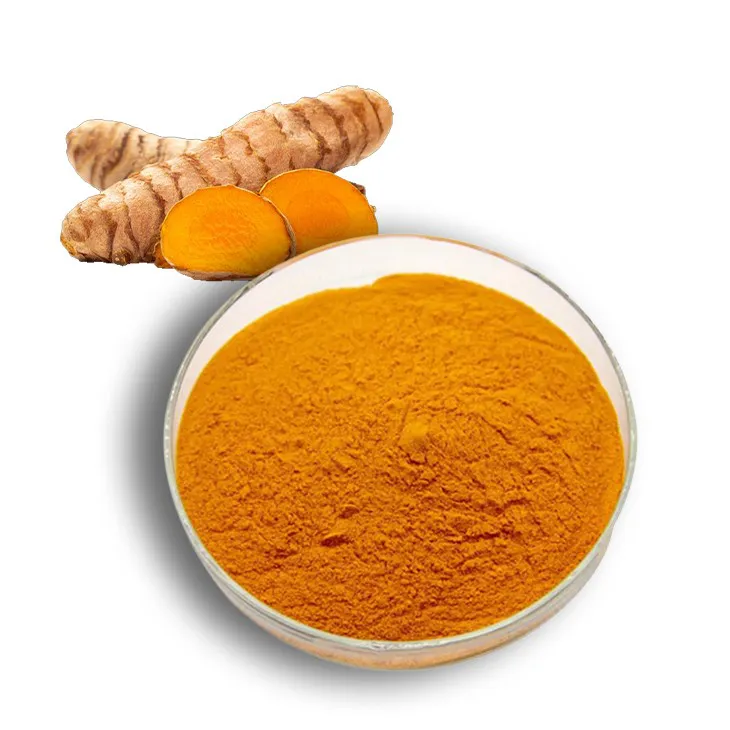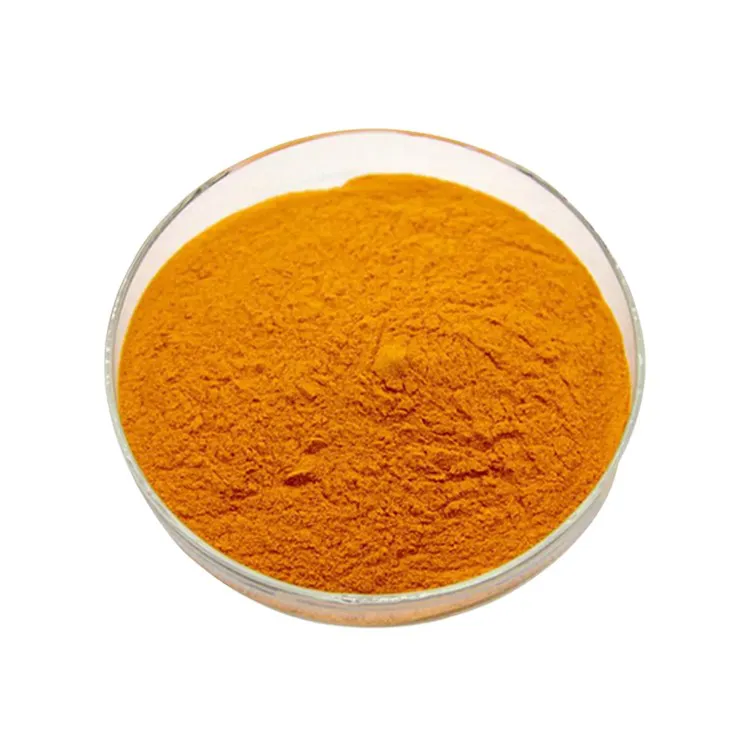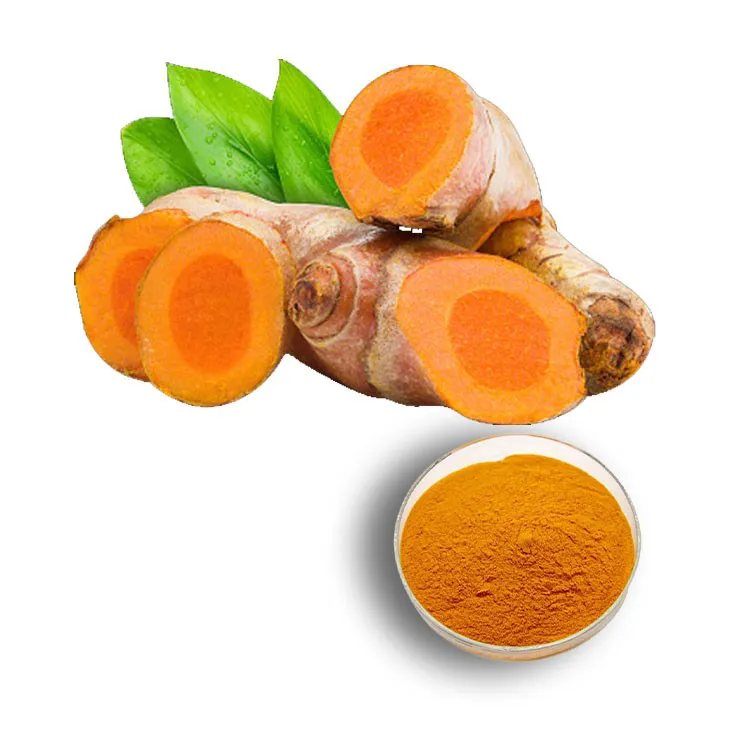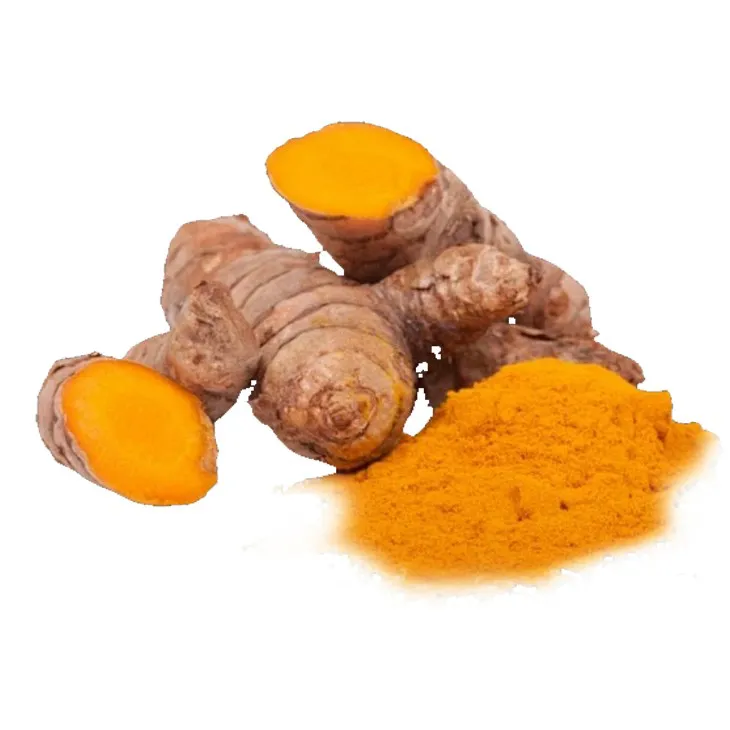- 0086-571-85302990
- sales@greenskybio.com
The Best Types of Curcumin: A Guide to Choosing the Best Curcumin.
2024-11-12

Introduction to Curcumin
Curcumin has long been celebrated for its potential in promoting health. Derived from the turmeric plant (Curcuma longa), it has a rich history of use in traditional medicine, particularly in Ayurvedic and Chinese medicine systems. In recent years, scientific research has been increasingly exploring its various health - related properties, such as its antioxidant, anti - inflammatory, and potential anti - cancer effects.

Curcuminoids: The Main Components of Curcumin
1. What are Curcuminoids?
Curcuminoids are a group of natural compounds that are the principal active ingredients in curcumin. They are polyphenolic compounds, with curcumin being the most abundant and well - studied curcuminoid. Demethoxycurcumin and bisdemethoxycurcumin are also important curcuminoids present in turmeric.
2. Pros of Curcuminoids- Natural Origin: As they are naturally occurring in turmeric, they are often considered a more "natural" option for those seeking health benefits. For example, in traditional medicine, the use of turmeric containing curcuminoids has been associated with treating various ailments like digestive disorders.
- Multiple Health Benefits: Research suggests that curcuminoids, especially curcumin, possess antioxidant properties that can help neutralize free radicals in the body. They also show anti - inflammatory activity, which may be beneficial for conditions such as arthritis. Additionally, there is emerging evidence regarding their potential role in cancer prevention and management.
- Poor Bioavailability: One of the major drawbacks of curcuminoids is their low bioavailability. When consumed orally, only a small fraction of the curcuminoids are absorbed by the body. This is due to several factors, including their poor solubility in water and rapid metabolism in the liver and intestine.
- Stability Issues: Curcuminoids can be relatively unstable, especially in the presence of certain environmental factors such as light, heat, and oxygen. This can lead to a decrease in their potency over time, making it challenging to ensure a consistent dose in curcumin - based products.

Nano - curcumin: A Technological Advance
1. What is Nano - curcumin?
Nano - curcumin is a form of curcumin that has been engineered at the nanoscale level. Through nanotechnology, curcumin particles are reduced to a very small size, typically in the range of nanometers. This nano - sizing has several implications for its properties and effectiveness.
2. Pros of Nano - curcumin- Improved Bioavailability: One of the most significant advantages of nano - curcumin is its enhanced bioavailability. The small size of the nanoparticles allows for better absorption in the body. For example, in some studies, nano - curcumin has been shown to be more easily taken up by cells compared to regular curcuminoids. This increased absorption may lead to greater potential health benefits.
- Enhanced Stability: Nano - curcumin can also exhibit improved stability. The nano - structure can protect the curcumin from environmental factors that would otherwise degrade it. This means that nano - curcumin - based products may have a longer shelf - life and can maintain their potency for a more extended period.
- Cost: The production of nano - curcumin involves complex nanotechnology processes, which can be relatively expensive. As a result, nano - curcumin - based products may be more costly compared to those containing regular curcuminoids.
- Regulatory Uncertainty: Since nano - technology is a relatively new area in the context of dietary supplements, there may be some regulatory uncertainties regarding nano - curcumin. This can make it difficult for consumers to be entirely sure about the safety and quality standards of nano - curcumin products.

Bioavailable Curcumin: Maximizing Absorption
1. What is Bioavailable Curcumin?
Bioavailable curcumin refers to forms of curcumin that are designed to overcome the low bioavailability issue associated with standard curcuminoids. This can be achieved through various methods, such as formulation with certain substances that enhance absorption or modification of the curcumin molecule itself.
2. Pros of Bioavailable Curcumin- High Absorption Rate: As the name implies, bioavailable curcumin has a much higher absorption rate in the body compared to traditional curcuminoids. This means that a greater proportion of the curcumin can be utilized by the body for its potential health - promoting effects.
- Effective in Lower Doses: Due to its improved absorption, bioavailable curcumin may be effective even in lower doses. This can be beneficial for those who may be sensitive to higher doses of curcumin or for those looking for a more cost - effective option as they may need to consume less of the product to achieve the desired health benefits.
- Formulation Complexity: Creating bioavailable curcumin often requires complex formulations. These formulations may involve the use of other substances, and ensuring the stability and compatibility of these formulations can be a challenge.
- Variability in Products: There is a wide variety of bioavailable curcumin products on the market, each with its own formulation and method of enhancing bioavailability. This can make it difficult for consumers to compare and choose the best product, as the effectiveness may vary depending on the specific formulation.

Factors to Consider When Choosing Curcumin
1. Purity
When selecting a curcumin product, purity is a crucial factor. High - purity curcumin products are less likely to contain contaminants or unwanted substances. Look for products that clearly state the percentage of curcuminoids present. For example, a product with a high percentage of curcuminoids, such as 95% or more, is generally considered to be of higher purity.
2. PotencyPotency refers to the strength or effectiveness of the curcumin product. This can be influenced by factors such as the bioavailability of the curcumin form used. A more potent curcumin product may be more likely to deliver the desired health benefits. Consider products that have been tested for their potency and have evidence - based claims regarding their effectiveness.
3. Brand ReputationChoosing a curcumin product from a reputable brand can provide some assurance of quality. Brands with a long - standing history in the supplement market and positive customer reviews are generally more reliable. Look for brands that adhere to good manufacturing practices (GMP) and have third - party testing for quality and purity.
4. PricePrice is also an important consideration. While it is tempting to choose the cheapest option, it is essential to balance cost with quality. Compare the prices of different curcumin products, taking into account their purity, potency, and brand reputation. For example, a more expensive nano - curcumin product may be worth the investment if it offers significantly higher bioavailability and quality compared to a cheaper, less effective curcuminoid - based product.

Conclusion
Choosing the best type of curcumin can be a complex task, given the various forms available and the factors to consider. Curcuminoids offer the advantage of being natural but suffer from low bioavailability. Nano - curcumin has improved bioavailability and stability but comes with a higher cost and regulatory uncertainties. Bioavailable curcumin can maximize absorption but may have formulation complexities and product variability. By carefully considering factors such as purity, potency, brand reputation, and price, consumers can make a more informed decision and select the curcumin product that best suits their needs and health goals.
FAQ:
What are curcuminoids?
Curcuminoids are a group of natural compounds found in turmeric. They are responsible for many of the health - related properties associated with turmeric. The main curcuminoid is curcumin itself, which is the most studied and well - known for its antioxidant, anti - inflammatory, and potential disease - fighting properties. There are also other curcuminoids such as demethoxycurcumin and bisdemethoxycurcumin, which may also contribute to the overall health benefits.
What is nano - curcumin?
Nano - curcumin is a form of curcumin that has been engineered at the nanoscale. The nanoparticles are much smaller in size compared to regular curcumin particles. This small size gives nano - curcumin certain advantages. It has increased bioavailability, which means it can be more easily absorbed by the body. This is because the small nanoparticles can pass through biological membranes more effectively, allowing more of the curcumin to reach the cells where it can exert its beneficial effects.
What does bioavailable curcumin mean?
Bioavailable curcumin refers to forms of curcumin that can be effectively absorbed and utilized by the body. Regular curcumin has relatively low bioavailability due to its poor solubility in water and rapid metabolism in the body. Bioavailable curcumin products are designed to overcome these issues. This can be achieved through various methods such as encapsulation, formulation with other substances that enhance absorption, or modification at the molecular level. When curcumin is bioavailable, it can better perform its functions like reducing inflammation, acting as an antioxidant, and potentially having positive impacts on various health conditions.
How can I determine the purity of a curcumin product?
To determine the purity of a curcumin product, you can look at the product label. Reputable manufacturers usually provide information about the percentage of curcuminoids in the product. High - quality curcumin products typically have a high percentage of curcuminoids, often 95% or more. Another way is to check for third - party testing. Some products may be tested by independent laboratories, and these test results can indicate the purity of the curcumin. Additionally, you can research the brand and its manufacturing processes. Brands that follow strict quality control measures are more likely to produce pure curcumin products.
What factors should I consider when choosing the best curcumin product?
When choosing the best curcumin product, several factors should be considered. Firstly, consider the type of curcumin, such as curcuminoids, nano - curcumin, or bioavailable curcumin, based on your specific health needs. Secondly, check the purity as mentioned before, aiming for a product with a high percentage of curcuminoids. Potency is also important; some products may have higher concentrations of active ingredients. Bioavailability is another crucial factor, especially if you want the curcumin to be effectively absorbed. Look for products with good reviews and from reliable brands. Also, consider any additional ingredients in the product, as some may enhance the effects of curcumin or be beneficial for your health in other ways.
Related literature
- The Therapeutic Potential of Curcumin: A Review of Clinical Trials"
- "Bioavailability of Curcumin: Problems and Promises"
- "Nano - curcumin: A Novel Approach for Enhanced Delivery and Efficacy"
- ▶ Hesperidin
- ▶ Citrus Bioflavonoids
- ▶ Plant Extract
- ▶ lycopene
- ▶ Diosmin
- ▶ Grape seed extract
- ▶ Sea buckthorn Juice Powder
- ▶ Fruit Juice Powder
- ▶ Hops Extract
- ▶ Artichoke Extract
- ▶ Mushroom extract
- ▶ Astaxanthin
- ▶ Green Tea Extract
- ▶ Curcumin
- ▶ Horse Chestnut Extract
- ▶ Other Product
- ▶ Boswellia Serrata Extract
- ▶ Resveratrol
- ▶ Marigold Extract
- ▶ Grape Leaf Extract
- ▶ New Product
- ▶ Aminolevulinic acid
- ▶ Cranberry Extract
- ▶ Red Yeast Rice
- ▶ Red Wine Extract
-
Eyebright Extract
2024-11-12
-
Avocado Extract Powder
2024-11-12
-
Pueraria Lobata Extract
2024-11-12
-
Chaste Berry Extract
2024-11-12
-
Saffron Extract Powder
2024-11-12
-
Andrographis Paniculata Extract Powder
2024-11-12
-
Acerola Juice Powder
2024-11-12
-
Citrus Aurantii Extract
2024-11-12
-
Natural grape seed extract
2024-11-12
-
Tongkat Ali Extract
2024-11-12





















